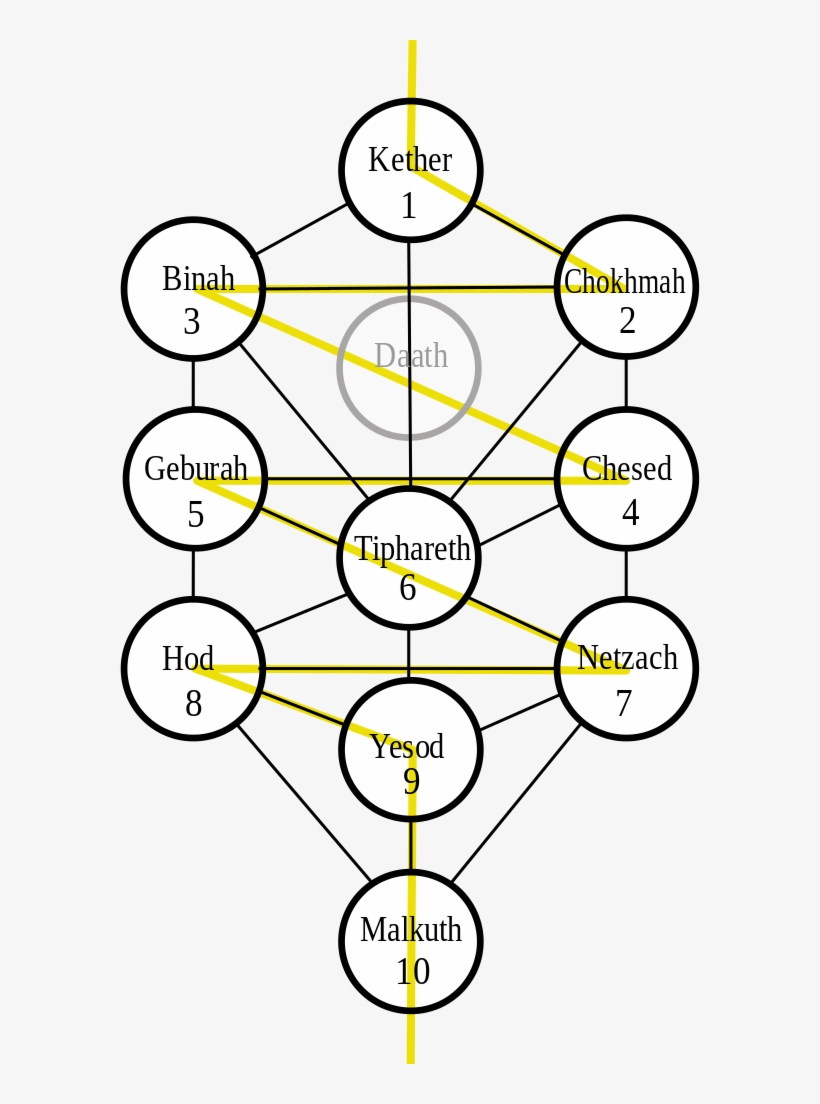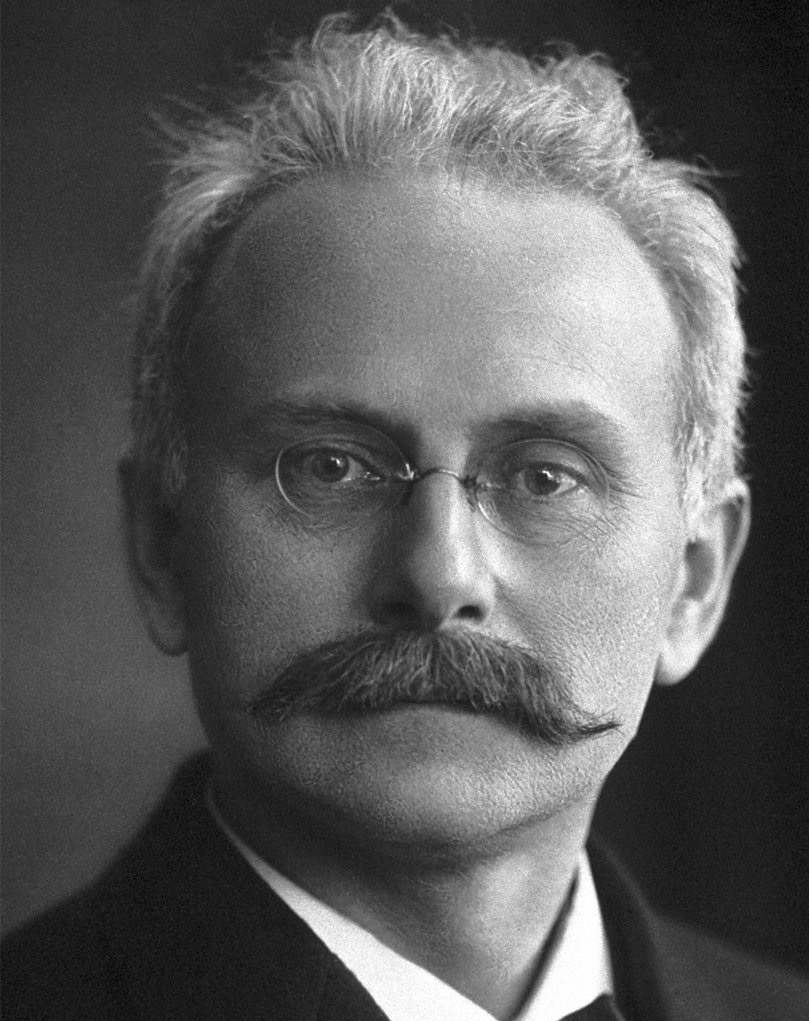JEM reveals that the field of science is understood by Jews as ethnic battleground and merely one more path to ethnic dominance. In this worldview, as there is no Art for Art’s sake, there is no science for science sake, rather both are areas of racial competition. This is not something we should necessarily find ourselves in complete disagreement with.
This is obvious in the field of human biodiversity. The Franz Boases, Jared Diamonds and Stephen Jay Goulds, for example, are not correct in any objective scientific sense —in fact, everyone knows they are wrong. Rather, they are correct for Jews and a Jewish will to power.
Here again we must understand the distinction in the sciences is not between empiricists and rationalists or theorists and experimenters —we must give our rivals more credit than that— it’s a distinction between truth tellers and beguilers.
One sees plainly, for instance, a numerological reference to the ten or eleven Sefirot of the Kabbalah[1] in the sometimes ten or eleven, undetectable, “theoretical” dimensions of “String theory.” Here we might assume that the metaphor of racial competition that appeared in the Pythagorean Tetractys and still informs the Cabalistic Tree of Life, as this study explicates, is consciously inserted here as well as JEM. In any case, no meaningful dichotomy exists between reason and empiricism only between deception, self-deception and truth.

Indeed science as an ethnic battlefield applies across all sciences. This is because of the prestige attached to science at least in healthy times. Here, among one group, there is little instinct to play fair or give credit where credit is due, only to promote and celebrate kin. Consider for example the completely disproportionate attention given to Einstein. A decent, civilized people would consider this crass beyond belief. Indeed, due to the efforts of co-ethnics, Einstein is better known maybe by a thousand times than his nearest coeval.
The now scarcely known Ernest Rutherford,[2] perhaps the most significant Physicists to ever live this side of Newton, is one such instance. Rutherford once was teased by the German physicist, Wilhelm Wien, that “no Anglo-Saxon can understand relativity.” Rutherford’s reply? “No, they have too much sense.”[3] Indeed, there is no clear evidence that Rutherford ever fundamentally changed this opinion. But to think one tried to cow even the likes of Rutherford with the suggestion that perhaps he was too stupid to “get Einstein,” begins to get at one of the methods by which this cult remains relatively powerful today.

In other words, in such situations, one accepts foolishness precisely so as not to seem the fool. This is as true in Theoretical Physics, as it is Religion, as it is in Philosophy, as it is in Abstract Art, as it is Multicultural Politics. Many “difficult” intellectual things survive on the same premise. Here there are Gnostic priests and laity or people who are forever fascinated and “learning,” who learn the terms and semi-understand the concepts.
Hoping to wield the “wisdom” of others so as to make themselves seem smart, they learn, through listening carefully, to somewhat robotically present ideas they themselves don’t fully understand. This begins to give us insight as well into those “theologically profound” priests of the medieval period whom persist, astonishingly, even in our own day, even “on the internet.” Indeed, the “difficulty” of Einstein requires priests.
Nobel Prize winner Johannes Stark, discover of the “Stark Effect” which revealed “the Doppler effect in canal rays and the splitting of spectral lines in electric fields,” provides some astonishing insight. He is quite the clear writer as well, as it would turn out, and a 1938 article in Nature magazine proves it. There the evident polymath Stark describes the Jewish tendency in science as “dogmatic,” while the Aryan tendency “pragmatic.” The prose is nearly Nietzschean.
Stark argued the dogmatist “starts out from ideas that have arisen primarily in his own brain, or from arbitrary definitions of relationships between symbols to which a general and so also physical significance can be ascribed.” Here the fact that physics is necessarily connected to symbols, as all forms of communications, becomes its vulnerability. In summation Stark states, “The pragmatic spirit advances continuously to new discoveries and new knowledge; the dogmatic spirit leads to crippling of experimental research and to a literature which is as effusive as it is unfruitful and tedious, intrinsically akin to the theological dogmatism of the Middle ages…”
On this point it is impossible not to notice a certain religio-mythological, metaphorical dimension in the school of lore that will emerge from Einsteinian “thought-experimenting.” For example, here the lusty Semitic God of Time, Chronos, merges with the Aryan Goddess of Space, birthing their Semitic child Timespace.[4] Here dying suns or Apollos or Spenglerian collapsing civilizations become “black holes” or consuming Semitic underworlds where not even “light” may escape.[5] Here new extra hidden dimensions become revisions of hidden otherworlds, afterworlds or spirit realms which may have been in their origin a metaphors for proto-Jewish crypsis or periods of expulsion. Indeed, it might be clearer to understand Einstein as a primary inspiration for the genre of Science Fiction —a genre that never makes sense for a reason— but rather as one of its early innovators. To wit we cannot doubt his power as a “culture creator.”
Stark describes the dogmatist as greatly emphasizing the result of any experiment that confirms his theory. On the other hand, the dogmatist doubts the validity of any experiment that contradicts his theory or, in any case, regards such contradictory instances as so unimportant as to hardly warrant mention. “Dogmatic physicists further present things as though their theories and formulae exhaustively covered the whole range of phenomena treated by them;” Stark remarks, “they can see no further problems in this field, and thought and inquiry are ice-bound in their formula.” One needn’t be a physicist for this to sound startlingly familiar. Stark cites Einstein as a primary example of a dogmatist, while presenting Rutherford as a near idealization of the pragmatist.

That Einstein’s work, considered Holy Writ since a solar eclipse in 1919 appeared to prove one of his predictions correct, is still an “ice-bound” dogma in the Physics community is beyond question. Hence Stark appears to capture a pattern of behavior that may be applied to Einstein’s present day priests. Here, as with medieval priests, reputations, the validity of a lifetime of publishing and livelihoods are based on the impeachable veracity of a spiritual founder and his teachings. Of Einstein, Stark says “[Einstein’s] relativistic theories are based on arbitrary definition of space and time coordinates.” [6] Here a predictive power, as with Einstein’s Theory of General Relativity, relies on being “Generally” and “Relatively” provable, save, of course, for “singularities.”
Stark also mentions the way “dogmatists” network to position their allies in key chairs and position in the academic community, so as to enforce their dogma, if also to aid co-ethnics. He mentions as well the wholly disproportionate flood of propaganda that invariably ensues upon the publishing of any of their work. Finally, elsewhere, he provides this incisive observation: “science represents the key position from which intellectual Judaism can always regain a significant influence on all spheres of national life.”[7]
This carries great truth. Indeed, with the “Prophet” Einstein, ostensibly the greatest genius in ostensibly the most important, difficult and yet “objective” field, we see JEM, a clear psychological attempt to establish Jews as the most useful and brilliant. Thus, in science, from the Jewish perspective, the true goal and understanding of Judaism and Christianity is simply repeated: Yahweh, Jewry, is mightiest.
With that matter settled, and the credibility of a Jewish societal leadership implicitly established, we are encouraged promptly to forget about science as something worthy of veneration, cultivation or attention. Certainly we see, from a palpable jealousy alone, that the Aryan greats of science have been consciously obscured.
Consider, for example, how obscure the brilliant Johannes Stark and the astonishingly accomplished Rutherford have become. Surely it shall be useful if another Stark appears, yet this time willing to painstakingly open every crypt in the Daedalian labyrinth of Einsteinian thought so as to expose it to the Apollonian Sun. Here both Stark’s and Einstein’s articulateness and command of mathematical symbols teaches us that though reality is disconnected from these words and symbols, the words and symbols direct reality or rather the all-important perception of it, hence must be mastered. If we desire “reality” to be real, and more, better than it is now, we must speak well and propagandize “artfully” on its behalf. Hence we require Apollonian polymaths.

Torah and JEM as “Science”
With Jews in Science, the definition of Torah becomes meaningful. Torah, תּוֹרָה, translates as “Pentateuch,” “theory,” “doctrine,” “lore” and “science.” The Torah, or the Biblical works more generally, as this study reveals, are encoded documents that moralize and instruct Jewry in its racial conflict against Aryans and non-Jews. Hence, this is the true “science” with which Jewry is concerned.
Though this reference to “science” is doubtlessly also a reference to the metaphors within the Biblical work, where Jews are understood as vines, salt, stone, earthly fire and so forth versus Aryans whom are understood as trees, oils, honey, milk, bread, fresh water and consumable substances, for example. All these symbols will be explicated in this study.
There, in the Torah, an entire “scientific” ecology between Jews and Aryans or non-Jews is indicated, where living and non-living elements interact. It’s important that we also observe scientific metaphors appearing in, for instance, contemporary comic book myths, describing the same phenomena; the interaction and intermixture between Aryan and Semite. There it is exposure to chemicals, the drinking of serums and nuclear radiation. I have already postulated on Sci Fi’s influences. The metaphors change, but never the messaging, and this is the key to deciphering.
JEM as the abstracted knowledge and science of healthy periods
I assert that much of important JEM is psychological understanding and sciences, racial or otherwise, of former open and healthy times, turned to metaphor, Myth and Religion. Hence JEM allows knowledge to be secreted among Jews, who study these things closely for hidden meanings, while host populations, their “covenant partners,”[8] remain benighted and at a competitive disadvantage. Hence Tikkun Olam,[9] as it is called, consists of two elements or processes.
The first process is the destroying of a competitive Aryan society and the competitive knowledge it has developed. The racial youth and energy of the Aryan allows for this incredibly productive creativity. The second process is the “abstracting,” harvesting, thieving, imploding, cannibalizing and continuing of this knowledge secretively or esoterically for Jewish purposes only. This makes them “wise.” Here science, for instance, degenerates into magic or myth, astronomy into astrology, primitive chemistry into alchemy, math into the mystic Pythagorean cult, Physics into String Theory. Yet it does not become less powerful at least in terms of its influence on people and the psyche. This is the Promethean transmission or theft verses the returning and immortal Apollonian transmission that shall last from this moment eternally. With it, even the racially young will become wise. Thus the truly best shall be placed on top.
[1] The Sefirot are the emenations in the Kaballah through which Ein Sof or the Infinite both reveals itself and continually creates.
[2] Ernest Rutherford, the father of nuclear physics, places second on Charles Murray’s list of great physicists. Ahead of him, tied for first place, are Albert Einstein and Isaac Newton. Here Charles Murray’s imperfect method of building his lists of all-time greats, relies on numbers of textbook mentions, perhaps proving it more of a “popularity” contest in some select but important cases. See: Murray, Charles, Human Accomplishment (New York, NY: Harper Collins, 2003), p. 126.
[3] Quoted in Richard Reeves, A Force of Nature: The Frontier Genius of Ernest Rutherford (2007), 66. The conversation took place in 1910.
[4] The concept of timespace has been contested. One refutation appears in two 2011 papers in Physics Essays, where Amrit Sorli, Davide Fiscaletti, and Dusan Klinar from the Scientific Research Centre Bistra in Ptuj, Slovenia, have described in more detail what this means. This is reported on in a 2011, April 25 article on Phys.org. https://phys.org/news/2011-04-scientists-spacetime-dimension.html
[5] None other than the ballyhooed Steve Hawking has said “There are no black holes [or at least as they have been posited in the popular imagination]” This appeared in Nature.com a 2014, January 24th article entitled: Steve Hawking: ‘There are no black holes.’ https://www.nature.com/news/stephen-hawking-there-are-no-black-holes-1.14583 Physicist and Ernest Orlando Lawrence Award winner George Chapline flat out denies their existence, calling misinterpreted imaging “evidence” mirage. He held to this position after the release of the 2019, April 10th imaging. He cites Einstein as a fellow “black hole denier.” https://dailygalaxy.com/2018/10/orbiting-violence-eso-image-of-milky-ways-supermassive-black-hole-that-some-scientists-say-doesnt-exist/
[6] These remarks appeared in article Stark wrote for Nature magazine that was published on April 30, 1938.
[7] These remarks appeared in July 15, 1937 Das Schwarze Korps, the weekly publication of the SS, in an article entitled “’Weisse Juden’ in der Wissenschaft” (‘White Jews’ in Science) which Stark co-wrote and oversaw. An English translation is available in: Klaus Hentschell, Editor; Ann M Hentschell, Translator, Physics and National Socialism. An Anthology of Primary Sources. , Birkhauser Verlag, 1996.
[8] This term is explicated in later in this study.
[9] This is a Judaic term referring to the overcoming of idolotary in Orthodox Jewry, and in making the world “a better place” for Jewry in general.
Great article. Concisely explains why today’s sciences have become so dogmatic, I.e. unscientific. The cult around Einstein has been extremely harmful because it has distorted people’s complete worldview. Physics have become a mystery religion.
LikeLike
” Physics have become a mystery religion” is even more succinct. I love it!
LikeLike
The pop-science string theory craze seems so crazy looking back (so does literally everything else, I suppose).
Still, I’m curious. Given the predictive and material value of Jewish science, (surely some of the most powerful science of the 20th century-albeit built in tandem with aryans) would this science be considered *invalid?
Or instead, would the goal be to have Mercury *aid a sovereign Apollo, rather than the other way around? Here, perhaps shielding the broader scientific endeavor (grounded in the “Jovial” will to life) from the culturally dissolutive side-effects of such powerful theories?
Hot take regardless. Fire all day.
LikeLike